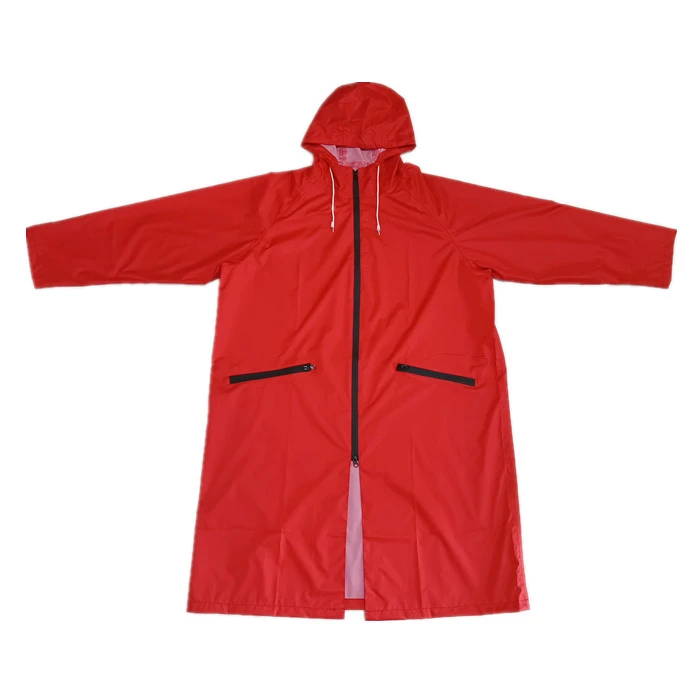 rainwears@163.com may@may-rain.com
rainwears@163.com may@may-rain.com Mon to Friday: 8.00 am - 7.00 pm
Mon to Friday: 8.00 am - 7.00 pm
Women's Raincoat Sewing Patterns for Stylish and Functional Outerwear Creations
Exploring Sewing Patterns for Women's Raincoats
As the seasons transition from sunny days to rainy spells, a good raincoat becomes an essential item in every woman's wardrobe. Crafting your own raincoat can be a fulfilling project that not only allows for creativity but also ensures a perfect fit. This article delves into the exciting world of sewing patterns for women's raincoats, guiding both beginners and seasoned sewists in making their own stylish and functional outerwear.
Understanding the Basics of Raincoats
Raincoats are specifically designed to keep you dry during wet weather. When selecting a sewing pattern, it's important to consider features that enhance water resistance, including fabric choice, seam sealing, closures, and overall fit. Popular materials for raincoats include waterproof and water-resistant fabrics like polyester, nylon, and even specialized fabrics with waterproof coatings.
Choosing the Right Sewing Pattern
When starting your raincoat project, the first step is selecting a suitable sewing pattern. Here are several types to consider
1. Classic Raincoat Patterns These feature a timeless silhouette with a fitted waist and flared bottom. They often include elements such as a hood, pockets, and buttons or zippers as closures. Classic patterns are versatile and can easily be personalized with different fabrics or embellishments.
2. Poncho Style If you're looking for ease and comfort, a poncho-style raincoat might be your best bet. These patterns typically have a loose fit and are easy to sew, making them suitable for beginners. Ponchos can be stylish and functional while providing ample coverage.
3. Trench Coats For a more polished look, trench coat patterns can be an excellent choice. They may require a bit more sewing experience due to their tailored design, but the result is a chic outerwear piece that can be worn in various settings, whether it be casual or formal.
4. Short Jackets Lightweight and trendy, short raincoat patterns are ideal for spring showers. These may feature various sleeve styles, crop lengths, and a more modern aesthetic.
Customizing Your Raincoat
One of the most exciting aspects of sewing your own raincoat is the ability to customize it according to your personal style. Adding trendy elements like unique colors, patterns, and detailing can make your raincoat stand out. Here are some tips for customization
sewing patterns for women's raincoats

- Fabric Choice Experiment with bright colors or fun prints that can transform a traditional raincoat into a fashion statement. You could also use reflective materials for added safety during nighttime outings.
- Tailoring Details Consider adding features such as cinched waists, contrasting linings, or stylish buttons. These elements can elevate the look of your raincoat and make it more unique.
- Functional Add-Ons Adding pockets, ventilation flaps, or adjustable cuffs can enhance the functionality of your raincoat, making it more practical for everyday use.
Tips for Sewing Your Raincoat
Sewing a raincoat can be challenging, especially when working with waterproof fabrics. Here are some helpful tips
1. Use the Right Tools Invest in a good pair of scissors specifically for cutting synthetic fabrics, along with pins or clips that won’t leave marks.
2. Sewing Techniques Familiarize yourself with techniques for sewing waterproof fabrics, such as using a walking foot to prevent slippage and avoiding pinholes by using clips.
3. Seam Sealing Consider using seam tape or sealing techniques to ensure that seams are completely watertight.
4. Practice on Scraps If you're new to working with specific materials, practice on fabric scraps before starting your main project to get accustomed to how the fabric behaves.
Conclusion
Sewing your own raincoat is a rewarding endeavor that combines practicality with creativity. With the right pattern and material, you can create a stunning piece that not only protects you from the rain but also complements your personal style. As you dive into this project, remember that the journey of creating something unique is just as important as the final product. So gather your materials, pick your favorite pattern, and let the sewing begin!
-
Children's Fashion Waterproof Printed Raincoats | Kids Gear
NewsJul.31,2025
-
Silver Printed Women’s Jacket – Stylish, Lightweight & Trendy Outerwear
NewsJul.30,2025
-
Fashionable Design Long Raincoat Rain Poncho Waterproof Polyester
NewsJul.30,2025
-
High Lighting Reflective Rain Jacket Windbreaker Safety Jacket for Adult
NewsJul.29,2025
-
Disposable PE Rain Poncho - Lightweight, Waterproof, Easy to Carry
NewsJul.29,2025
-
Stylish Lady Coat Women Jacket – Trendy & Elegant Outerwear
NewsJul.29,2025































